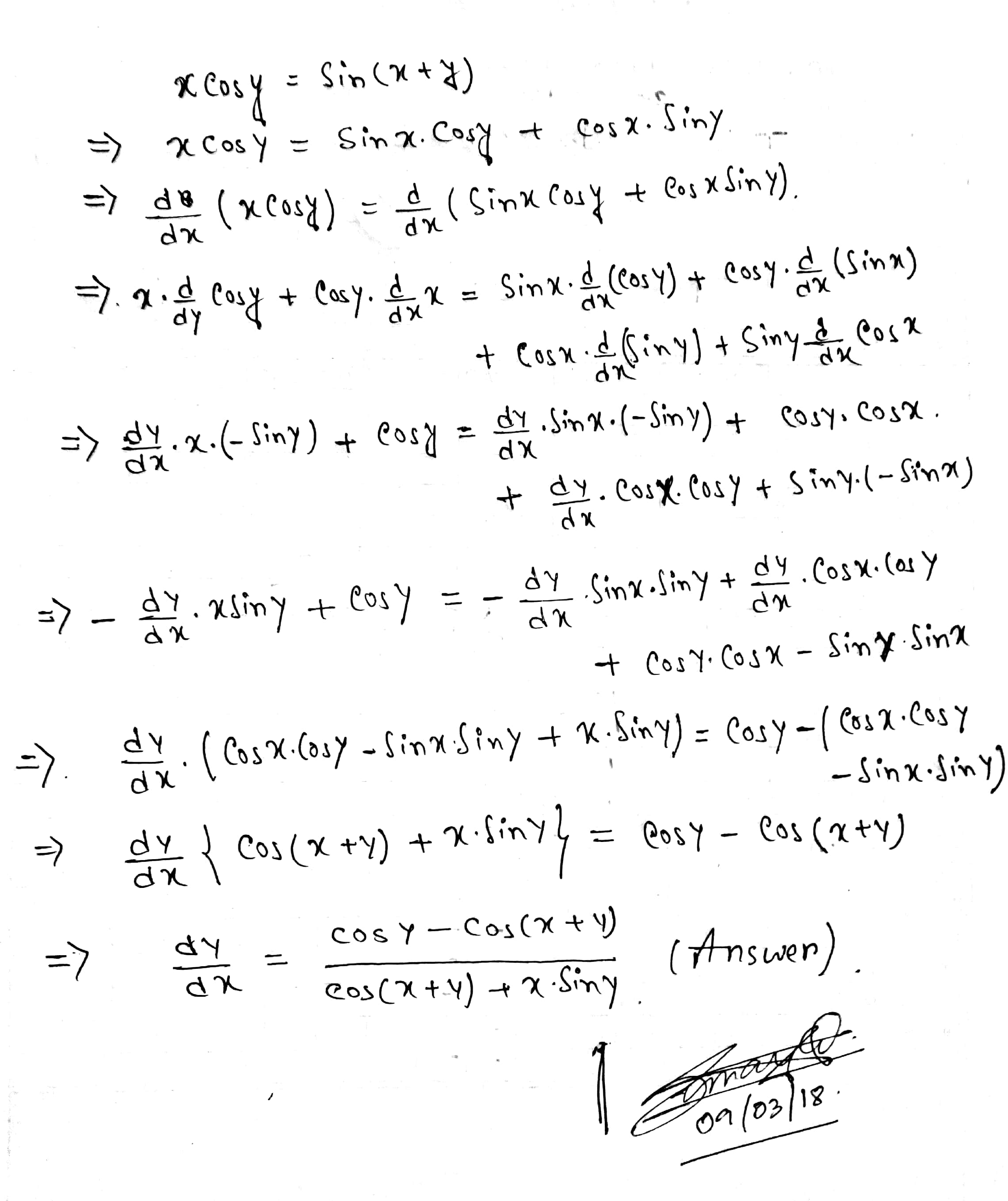Find dy/dx of x cos y= sin (x+y) ?
3 Answers
Explanation:
We will use the Usual & the Rule of Implicit Differentiation.
Dividing by
Enjoy Maths.!
This type of question must be of the form :"If
Explanation:
dividing both sides by
Image reference...
Explanation:

Hope it helps....
Thank you...


